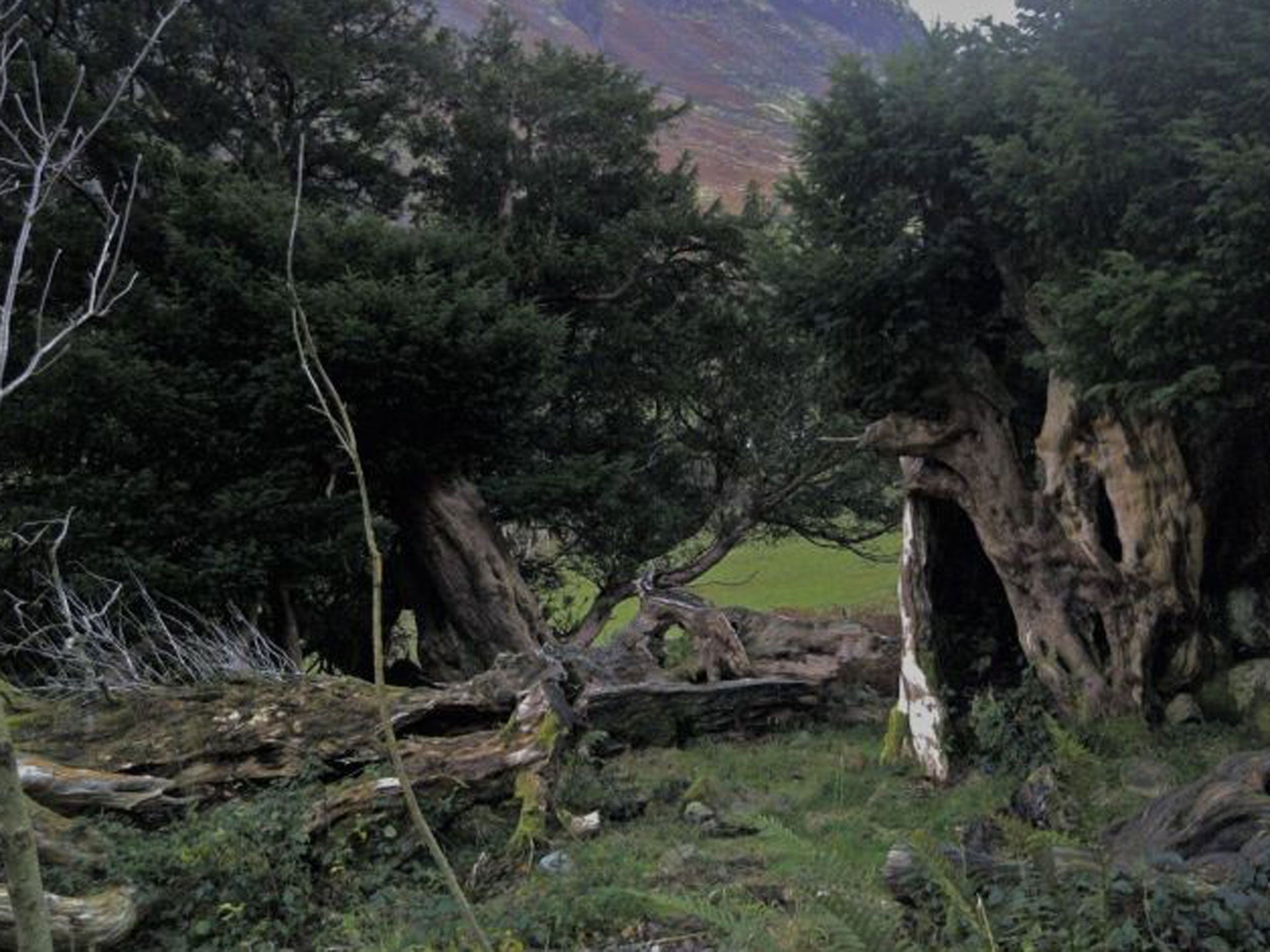The continuous ridge of russet, stone-strewn lakeland mountain encircles a valley floor as flat as a paddy field. Lights of farms are beginning to spark and the cries of tawny owls reverberate around the bowl of darkening fells. In the distance, sunset pinks the snow-dusted peak of Glaramara. It is a suitable stage to approach the most notable trees of northern England.
A short scramble up the slope and there they are: three of Europe's oldest living organisms. They project from the flank of heather and curly tipped bracken at strange angles. Twisted, sculptural, they are more shell-torn turret than tree. But despite the distorted, inflated limbs, the fizzing cascades of evergreen flat, needle foliage erupting from their top and sides marks them out as yews.
They were made famous by Wordsworth's 1803 love poem to the taxus baccata, "Yew-Trees". Research suggests that his "fraternal four of Borrowdale" (one fell during a storm a few years back) could actually be from the same rootstock. Regardless, it is their age that is so astounding: a top branch was dated at 1,500 years, leading scientists to believe their trunks could be as much as 2,000 years old.
The mind boggles at such figures. Inanimate standing stone or pyramid is one thing, but the forms beneath my fingers may have grown in this Cumbrian valley since before the Nativity. It has a powerful effect on your perspective. I walk between them, touching what Wordsworth called "intertwisted fibres, serpentine, up-coiling and inveterately convolved".
In other places the trunks are bleached white and ghostly but their lowness to the ground means you commune with them, face to gnarled face. I rest on a fallen piece of heartwood reminiscent of a storm sea's waves frozen into permanence; all around, sky and fell blacken with early wintry dusk. I sense time past and time passing in this magical valley.
* The Borrowdale Yews are near the hamlet of Seathwaite, eight miles south-west of Keswick at the end of a minor road that heads south-west from Seatoller. By public transport, the best railway station is Penrith on the West Coast main line. From here, a regular bus service runs to Keswick, taking 40 minutes, In Keswick, bus 78 can be caught to Seatoller.
Stay at the Hazel Bank Hotel (017687 77248; hazelbankhotel.co.uk) in nearby Rosthwaite. As well as having some of the best views in Cumbria and cosy en-suite bedrooms, this family-run country hotel does a fine line in fireside wines and a lovely four-course set menu. Doubles from £65, including breakfast.
Subscribe to Independent Premium to bookmark this article
Want to bookmark your favourite articles and stories to read or reference later? Start your Independent Premium subscription today.


Join our commenting forum
Join thought-provoking conversations, follow other Independent readers and see their replies